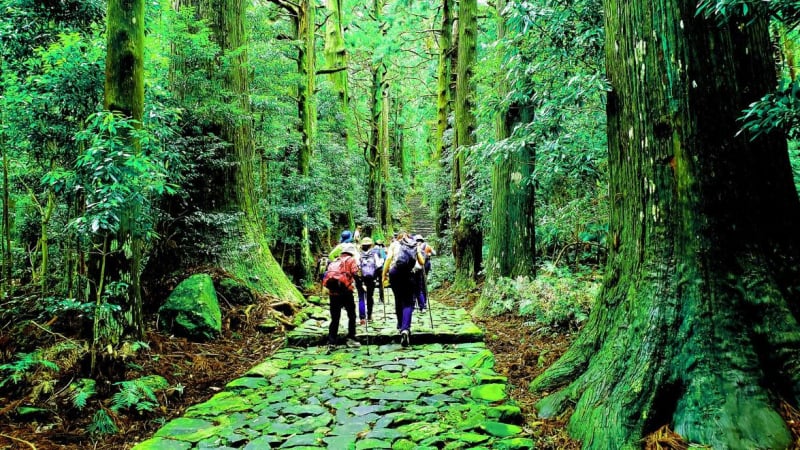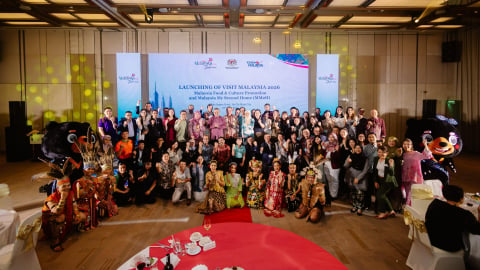The Japanese are renowned for their dedication to perfection. From traditional crafts to cutting-edge electronics, Japan is home to some of the most innovative and high-quality products. It is therefore no surprise that the creativity, perseverance and dedication of the local farmers have mastered the art of cultivation, producing some of nature’s finest gifts, or “premium fruits”.
What is the definition of "premium fruit" in Japan?
Fruits in Japan can be divided into two types: the kind we buy at our local supermarket to supplement our daily vitamins and minerals, and the kind that are considered a work of art, called "high-class fruits".
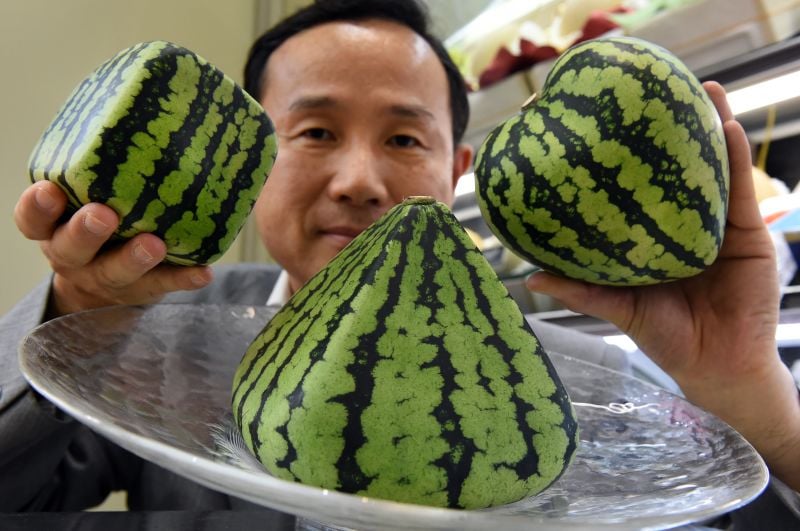
In Japan, fruit is not simply a source of nutrition, but also carries a deeper meaning.
While mass-produced fruit can be found on supermarket shelves across Japan, “premium fruit” is often displayed in specialized stores. The amount of effort that goes into growing these “masterpieces,” along with their perfect appearance and great taste, results in sky-high prices.

Perfection in form, delicacy in flavor and dedication in cultivation process
Therefore, premium fruits are not part of the daily diet but are usually reserved for special occasions or given as gifts.
Premium fruits are achieved to perfection thanks to the Japanese farmers' meticulous attention to the smallest details and dedication to mastering cultivation techniques. The unblemished beauty of these agricultural masterpieces makes it difficult to choose between equally perfect products. For your convenience, we have compiled a list of the most famous premium fruits of Japan.
Square watermelon
In terms of worldwide popularity, the Japanese square watermelon is hard to beat. Many of us might think that such uniquely shaped fruits must be a new variety of watermelon, but that is not the case. The square shape is created by placing a “normal” watermelon in a box while it is still young, not separated from the plant. The watermelon then grows and takes on the shape of the box.
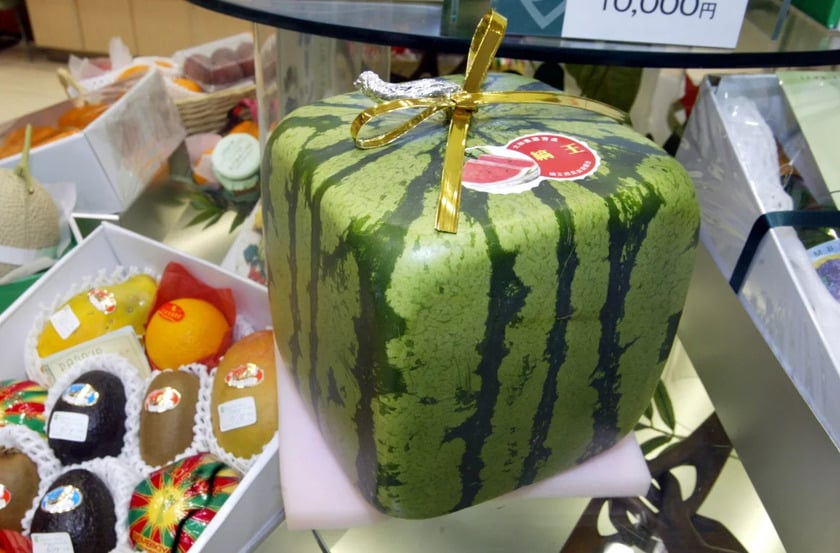
When it comes to Japanese fruits, the image of the square watermelon is definitely one of the most unforgettable symbols.
For those craving a slice, we have some bad news: this unique growing method results in square watermelons that are harvested unripe and nearly inedible. But that doesn’t mean you should skip them. This summer fruit is not only a popular choice for decorative purposes, but also makes a memorable gift.
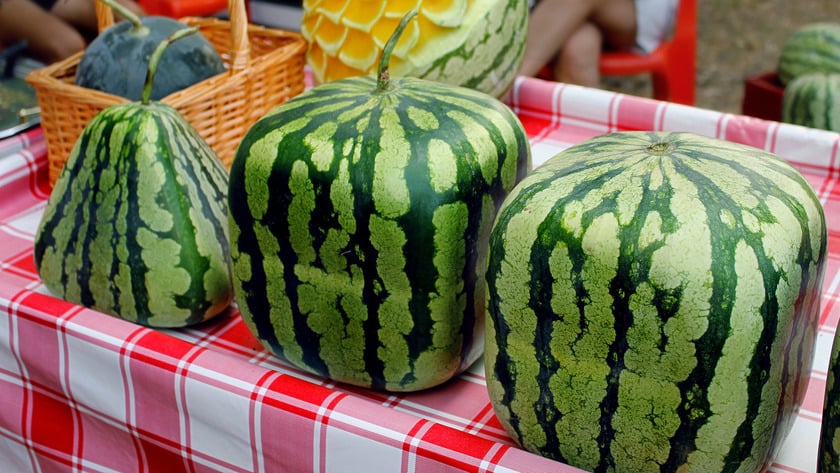
Originally, square watermelons were created not only for visual appeal but also for practical purposes: easy to stack, store and transport.
Musk Melon
Melons are a very popular fruit in Japan, as evidenced by the widespread popularity of melon-flavored drinks and desserts. Indeed, melons seem to be everywhere in Japan, and the premium fruit industry happily embraces this fact by offering a wide variety of melons. Of the many heavyweights, the Musk melon is probably the most famous and popular. Whether you buy it as a gift or keep it for yourself, this is one premium fruit you can’t go wrong with.
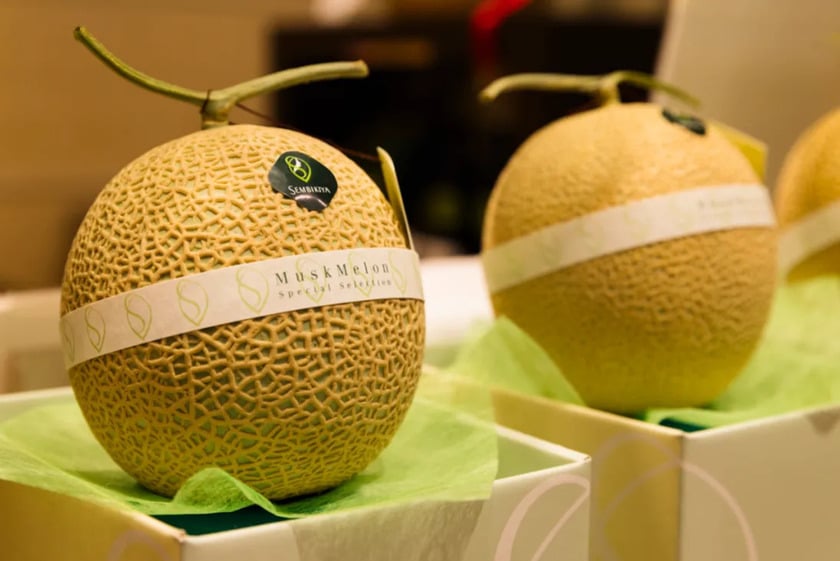
To create this natural wonder, a method of leaving only one fruit on each plant is often used. As a result, all the nutrients are concentrated in the chosen Musk melon, making it tastier than ever.
Taiyo no Tamago
"Taiyo no Tamago," which translates to "Egg of the Sun," is perhaps the most famous mango variety from Japan. Unlike regular mangoes that are picked when they reach the required ripeness, "Taiyo no Tamago" is harvested using a unique and delicate method. It is carefully tended until it falls from the tree on its own. But don't worry! A net is attached to the tree to catch the mango, preventing it from falling to the ground. This fully ripe fruit has a sugar content of over 15%, making it wonderfully sweet.
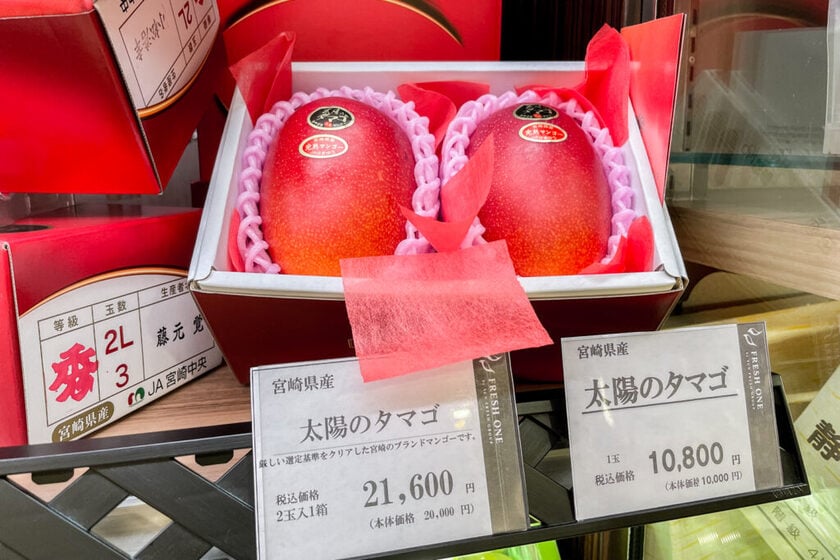
Super mangoes are as expensive as diamonds in the culinary world.
This premium, fully ripe mango comes from Miyazaki Prefecture. To be certified as a "Taiyo no Tamago," a mango must meet specific criteria: a sugar content of over 15%, a weight of at least 350g, and a distinctive red color. As such, the "Taiyo no Tamago" is a rare mango and is carefully selected from among other fully ripe mango varieties. It is of the Irwin variety, which is also grown in places like Kagoshima and Okinawa. However, only those grown in Miyazaki and meeting a few strict conditions can be called "Taiyo no Tamago."
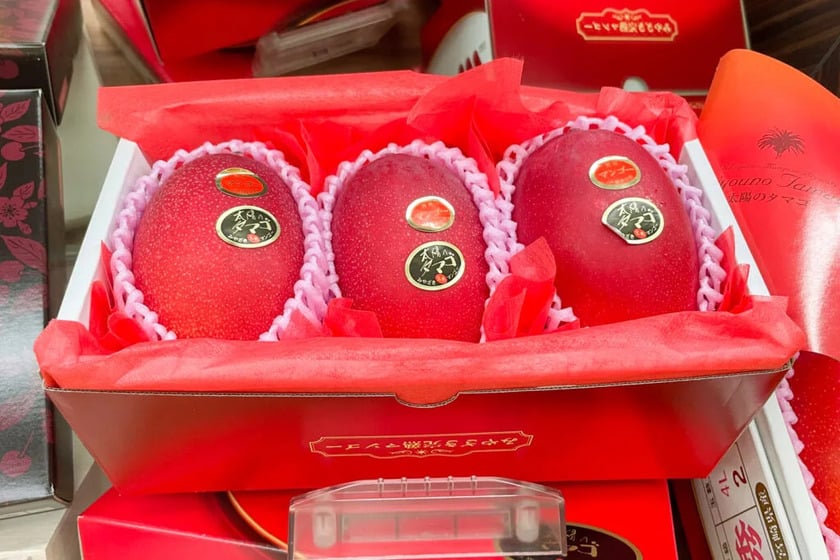
What is special is that these mangoes are harvested when fully ripe and fall off naturally, ensuring natural ripeness.
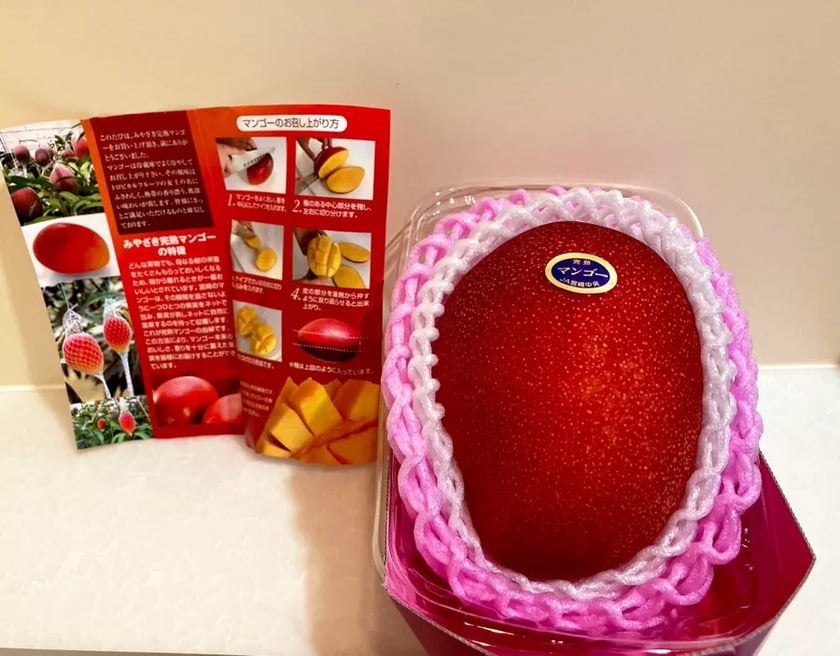
Additionally, only about 15% of fully ripe mangoes from Miyazaki are certified as "Taiyo no Tamago," and the 5L size is even rarer, accounting for less than 1%.
Ruby Roman
Considered the world's most expensive grape, "Ruby Roman" is one of the most precious grape varieties grown in Japan. It is famous for its large size and praised for its refreshing sweetness.
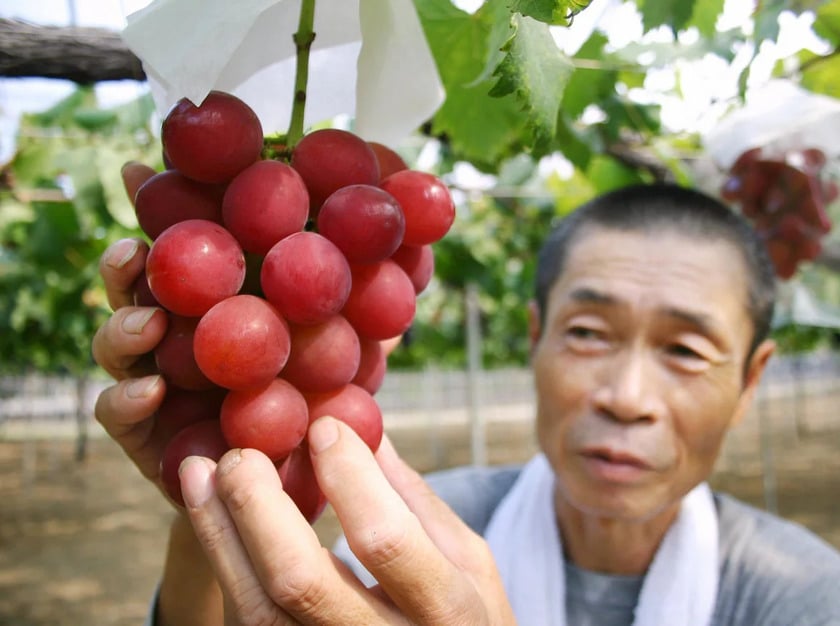
Red Gem from Ishikawa
While there are many delicious grape varieties in Japan, "Ruby Roman" is definitely worth considering whether you want to enjoy it yourself, share it with loved ones, or buy it as a unique gift. "Ruby Roman" comes in two varieties to choose from. One is seeded, while the other is a seedless version that is easier to eat.

Ruby Roman grapes are mainly grown in Ishikawa Prefecture, and those labeled "grown in Ishikawa" are considered to be of the highest quality.
Hatsukoi no Kaori
The name "Hatsukoi no Kaori" can be translated as "Taste of First Love", and it was the first white strawberry variety cultivated in the world. Not only is it historically significant, but its delicate flavor also makes it an ideal gift to give, or a great treat to enjoy on its own. "Hatsukoi no Kaori" may look unripe to those used to eating red strawberries. But don't let its pale appearance fool you; it is fully ripe and delicious. White strawberries simply contain small amounts of anthocyanin, the pigment that gives strawberries their red color.









